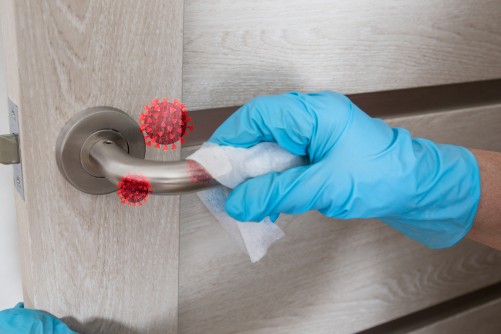Healthcare-associated infections (HAI) are one of the gravest threats to patient safety worldwide. The importance of the hospital environment has recently been revalued in infection prevention and control. Though the literature is evolving rapidly, many institutions still do not consider healthcare environmental hygiene (HEH) very important for patient safety. The evidence for interventions in the healthcare environment on patient colonization and HAI with multidrug-resistant microorganisms (MDROs) or other epidemiologically relevant pathogens was reviewed by Peters, et al. (2022).
The researchers performed a systematic review according to the PRISMA guidelines using the PubMed and Web of Science databases. All original studies were eligible if published before December 31, 2019, and if the effect of an HEH intervention on HAI or patient colonization was measured. Studies were not eligible if they were conducted in vitro, did not include patient colonization or HAI as an outcome, were bundled with hand hygiene interventions, included a complete structural rebuild of the healthcare facility or were implemented during an outbreak. The primary outcome was the comparison of the intervention on patient colonization or HAI compared to baseline or control. Interventions were categorized by mechanical, chemical, human factors, or bundles. Study quality was assessed using a specifically-designed tool that considered study design, sample size, control, confounders, and issues with reporting. The effect of HEH interventions on environmental bioburden was studied as a secondary outcome.
After deduplication, 952 records were scrutinized, of which 44 were included for full text assessment. A total of 26 articles were included in the review and analyzed. Most studies demonstrated a reduction of patient colonization or HAI, and all that analyzed bioburden demonstrated a reduction following the HEH intervention. Studies tested mechanical interventions (n = 8), chemical interventions (n = 7), human factors interventions (n = 3), and bundled interventions (n = 8). The majority of studies (21/26, 81%) analyzed either S. aureus, C. difficile, and/or vancomycin-resistant enterococci. Most studies (23/26, 88%) reported a decrease of MDRO-colonization or HAI for at least one of the tested organisms, while 58% reported a significant decrease of MDRO-colonization or HAI for all tested microorganisms. Forty-two percent were of good quality according to the scoring system. The majority (21/26, 81%) of study interventions were recommended for application by the authors. Studies were often not powered adequately to measure statistically significant reductions.
The researchers say that improving HEH helps keep patients safe, adding that "Most studies demonstrated that interventions in the hospital environment were related with lower HAI and/or patient colonization. Most of the studies were not of high quality; additional adequately-powered, high-quality studies are needed."
Reference: Peters A, Schmid MN, et al. Impact of environmental hygiene interventions on healthcare-associated infections and patient colonization: a systematic review. Antimicrobial Resistance & Infection Control. Vol. 11, article number 38 (2022).
